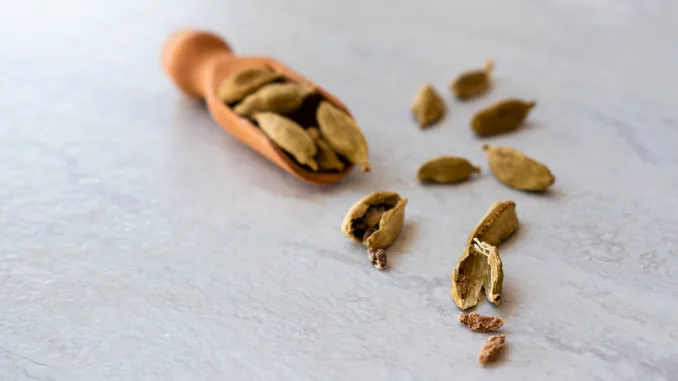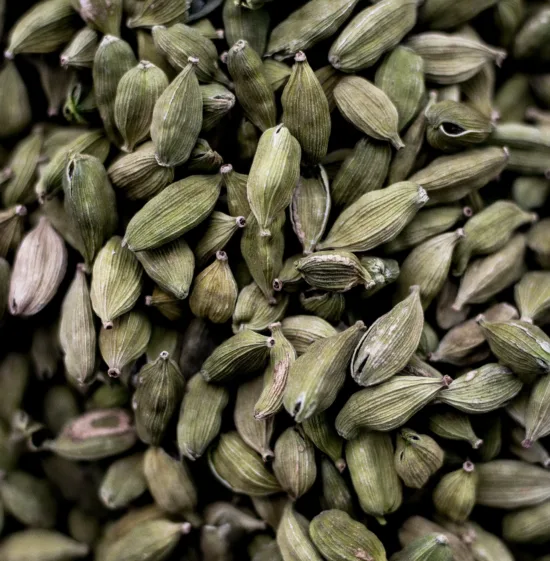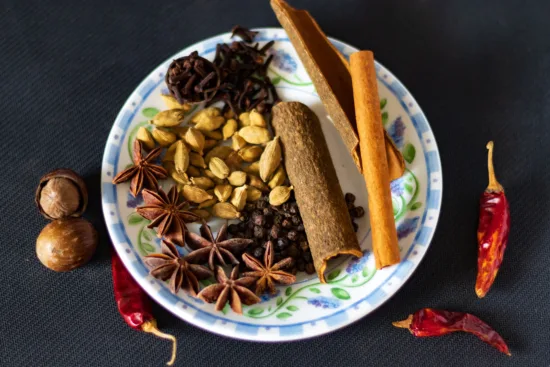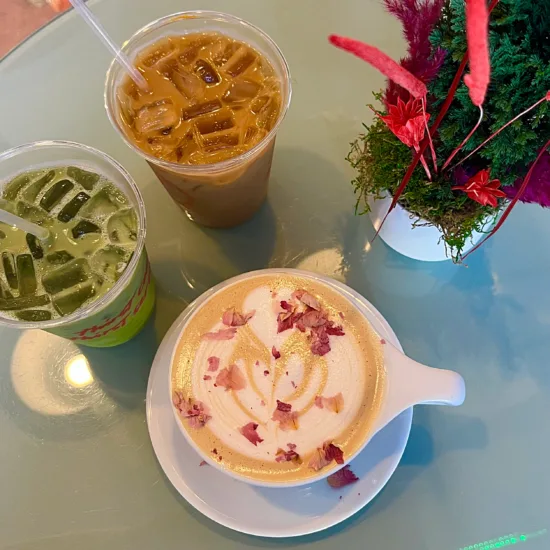
Popular throughout South Asian, Arab, and European traditions, cardamom brings beautiful flavor and aroma to coffee—and its history can be traced back thousands of years.
BY EMILY JOY MENESES
BARISTA MAGAZINE ONLINE
Featured photo by The Matter of Food sourced via Unsplash
Aromatic, floral, and peppery, cardamom is an integral part of South Asian and Arab coffee and tea traditions, steeped in thousands of years of history. Today, we’re uncovering all things cardamom: the origins of cardamom cultivation, its ancient trade, and how it is incorporated into food and beverage around the world today.
Meet Cardamom
Cardamom is a spice that comes from the seeds of the Elettaria cardamomum plant, which is part of the ginger family. Floral and spicy with subtle tasting notes of citrus and mint, cardamom is nicknamed the “queen of spices.” It’s also one of the most expensive spices in the world.

Origins and Journey Around the Globe
Guatemala is currently the world’s top cardamom producer, responsible for two-thirds of global cardamom production. However, the spice originated in a region known as the “Cardamom Hills” located in the rainforests of southern India. Sanskrit texts reveal that the spice was a culinary staple in India as far back as 3000 BCE. Cardamom traveled to other countries through the Silk Road and other trade routes. It eventually made its way to Guatemala in 1914 by way of European colonizers traveling between South Asia and Central America.
By the 1970s, Guatemala would become a leading exporter of cardamom. It officially became the world’s top producer in the year 2000. Today, the spice appears in many cuisines throughout the world, and is associated with a variety of South Asian, Arab, and European traditions.

Cardamom in Culinary and Spiritual Traditions
While cardamom is popular around the world, its home country India still holds the largest consumer market for the spice today, with Saudi Arabia trailing close behind. In Indian cuisine, cardamom is an everyday staple, appearing in curry dishes, rice pudding, chai, and more. In Hinduism, it’s often used as an offering and is believed to promote mental clarity, inner peace, and positivity.
Cardamom also plays a big role in Arab traditions. In Lebanon, Palestine, Saudi Arabia, and beyond, the spice is sprinkled on coffee grounds before brewing to add subtle flavor and aroma to the cup. The spice is also common in Scandinavian cuisine, used year-round in waffles, pancakes, and traditional sweet buns.

Next time you brew a cup of coffee, try adding a sprinkle of cardamom. Let the spice serve as a reminder that the recipes we incorporate into our lives today are reflective of thousands of years of tradition—ancient history, preserved in simple yet powerful ways.
ABOUT THE AUTHOR
Emily Joy Meneses (she/they) is a writer and musician based in Los Angeles. Her hobbies include foraging, cortados, vintage synths, and connecting with her Filipino roots through music, art, food, and beverage.
Subscribe and More!

Out now: It’s the December 2023 + January 2024 issue! Read it for free with our digital edition. And for more than three years’ worth of issues, visit our digital edition archives here.
You can order a hard copy of the magazine through our online store here, or start a subscription for one year or two.

